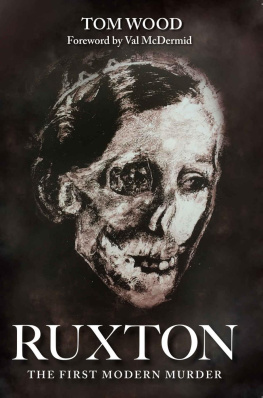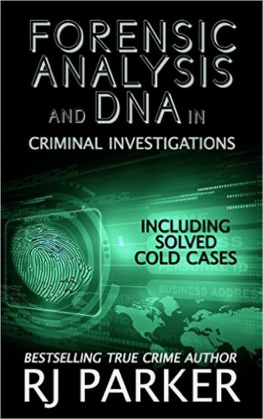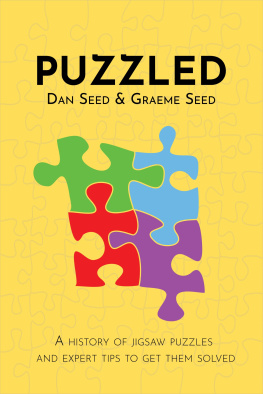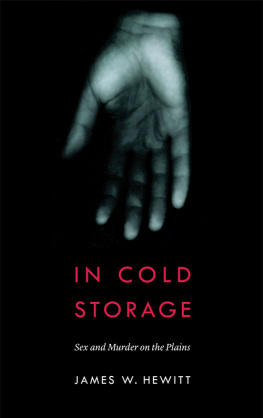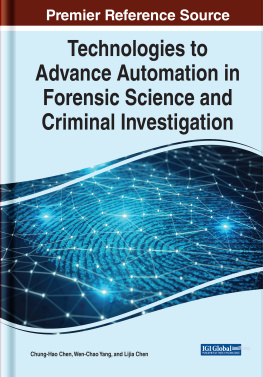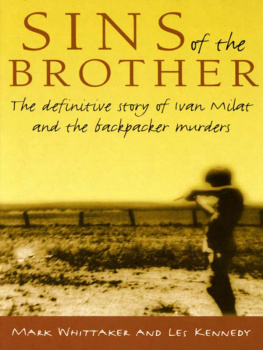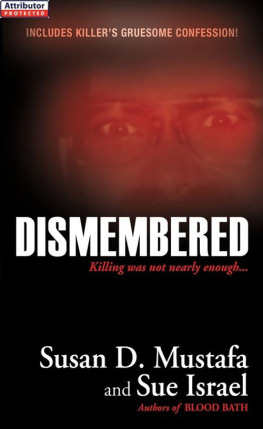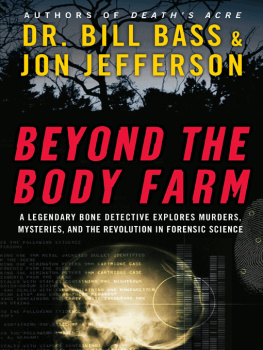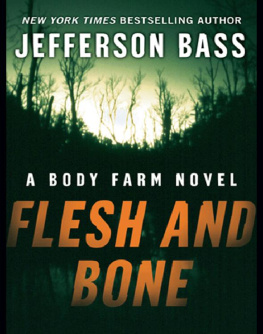Ruxton:
The First Modern Murder
Tom Wood
RINGWOOD PUBLISHING
GLASGOW
Copyright Tom Wood 2020
All rights reserved.
The moral right of the author has been asserted
All rights reserved. No part of this publication may be reproduced or transmitted in any form or by any means, electronical or mechanical, including photocopy, recording or any information storage and retrieval system without permission in writing from the publisher.
First published in Great Britain in 2020
by
Ringwood Publishing, Glasgow.
ISBN 978-1-901514-85-8
British Library Cataloguing-in-Publication Data
A catalogue record for this book is available from the British Library
CONTENTS
This book is dedicated to my father, Sergeant R E Wood,
Edinburgh City Police, a detective of the old school.
And to the memory of Sergeant Robert Sloan, Dumfriesshire Constabulary the hero of Gardenholme Linn, and all the other forgotten heroes.
Red stains on the carpet
Red stains on the knife
For Doctor Buck Ruxton had
Murdered his wife
The Maid Servant saw it
And threatened to tell
So, Doctor Buck Ruxton, hes
Killed her as well
After Red Sails in the Sunset
Bing Crosby, 1935
FOREWORD
When Bukhtyar Hakim arrived in Britain in 1925 with medical qualifications from the University of Bombay, it was his ambition to become a famous surgeon. Instead, he found a different kind of fame as one of the twentieth centuries most notorious murderers.
The trial of Buck Ruxton, the name he adopted when the General Medical Council authorised his qualifications, is a landmark case in British legal history. Its justifiably called the first modern murder because it marks a turning point in the role of science in the courtroom and the organisation of policing, as well as being a rare example of cross-border cooperation. Ruxtons conviction in an English court was only secured because of the evidence of Scottish forensic scientists, expert witnesses from a completely separate legal jurisdiction.
Ruxton, an apparently respectable GP with an extensive practice in Lancaster, brutally beat to death his wife and their maid in the family home in the early hours of a Sunday morning. Over the course of the next few days, he dismembered their bodies and finally dumped them in a river near the Scottish Borders town of Moffat.
Their badly decomposed remains were discovered by a family out walking. All identifying marks had been erased, which presented the police with a thorny problem. Who were the victims and where had they come from?
Thanks to a quick-witted local bobby and a group of scientists determined to develop new techniques and find new applications of existing knowledge, Buck Ruxton finally paid for his crimes.
Tom Wood, a retired Edinburgh detective with a distinguished record in catching the very worst of criminals, has had access to all the case papers, some of which have never previously been seen beyond the original team of detectives. They reveal the inside story of the murder, including lines of inquiry never before made public.
Wood tells his compelling story with the clarity and urgency of a thriller. He brings to life the Indian doctor and his charismatic wife in a vivid picture of their convivial social life in Lancaster. And he takes us on a painstaking journey through the complex tapestry of a murder investigation that is still relevant to forensic inquiry today.
Until now, the whole story of this fascinating case had never been told. Tom Woods book fills an important gap in the history of British criminal investigation. And its a damn good read.
Val McDermid
June 2020
Edinburgh
AUTHORS NOTE
When I joined Edinburgh City Police as a cadet in the late sixties, the famous crimes of Scotlands past were drummed into us as part of our training and, I suspect, our cultural indoctrination.
In the old training department in Chambers Street, hoary old sergeants, all bemedalled war-service men, repeated again and again the key elements of the most important cases until we knew them by rote. HMA v Chalmers, HMA v Manuel, the Moorov doctrine and the famous criminal investigations Burke and Hare, Peter Manuel and Dr Buck Ruxton.
The lessons were graphic, with no gory detail spared, and there were always two underlying but powerful messages. First, this is your legacy as Scottish police officers - step up or get out, and second, wear your uniform with pride, for better men have worn it before you. It was all done in the vain hope that this latest batch of pitiful recruits would one day fill the boots of previous generations and it stuck.
I had always known about the Ruxton Murders. My mother spoke of them; she had been a teenager in 1935, the case had left a lasting impression and she could recite some of the street songs that sprung up to celebrate it. The murders had been famously bloody, brutal and a triumph of forensic science. So, when many years later I was given a file of old papers relating to Ruxton I was naturally interested.
The papers had come from the family of one of Edinburghs legendary detectives, Lieutenant John Sheed, who had died some time before. They included original police statements, records of meetings, transcripts of telephone messages, documents and old sepia-tinted photographs, yellow, faded foolscap pages typed in a formal, old-fashioned yet familiar language that told a story that was more complex than and sometimes different from the long-accepted narrative of the case is so widely known.
It was a remarkable story of new villains and forgotten heroes which deserved to be told.
Tom Wood
2020
PREFACE
The old high road from Edinburgh to Moffat runs south through the Borqderlands of Scotland, winding round the Devils Beef Tub then down through the old county of Moffatdale towards the county town of Moffat. Less than two miles north of the town boundary in the parish of Kirkpatrick-Juxta, the road turns across a narrow bridge over the River Linn, a spate burn that carries rain off the surrounding hills and down to the River Annan and the sea.
The place where the bridge crosses the road is called Gardenholme Linn, and as it straddles a tight bend on the road, most drivers hardly notice the bridge, or the river, let alone realise that Gardenholme Linn is notorious as the deposition site of one of the most infamous murders in British criminal history.
The ancient history of the Borderlands between Scotland and England is drenched in blood. For centuries, the feuding countries raided and slaughtered as the contested border between the kingdoms moved with victory and defeat. The Devils Beef Tub, a vast hidden glen, earned its name as the hiding place of rustled cattle stolen in the Border raids.
For the people of the Borderlands this bloody history is alive part of their heritage but no one could have foreseen that this remote, unremarkable spot would become the focus of one of the most famous murder investigations of the 20th century. It was an investigation that brought together all branches of forensic science then known, broke new ground in the fields of anatomy and entomology, and culminated in the longest criminal trial in English legal history.
More importantly, the case forced a step change in the way that serious crime was investigated, and its legacy is still evident today. But like so many serious crimes, the investigation began with an observant member of the public and, after many twists and turns, ultimately rested upon the extraordinary teamwork of a remarkable group of professionals.
CHAPTER 1
STRANGEWAYS PRISON, MANCHESTER
11 MAY 1936
The condemned cell at Strangeways was small by any standards but relatively comfortable and furnished better than the usual spartan conditions of the old Victorian jail. Situated at the end of B Wing, in the central part of the prison, it was in fact a two-apartment cell with sleeping quarters for the prisoner and an anteroom. This is where the two wardens assigned to the prisoner sat and where meals were eaten together in the few days leading up to the execution. It had been purpose built in the mid-19th century, one of the few prisons in the country to have permanent gallows and an execution suite. It had been well used hangings were a regular occurrence and the staff were well practised. The wardens were hand-picked old hands, chosen for their affability. They were there to make sure their charge did not cheat the gallows, but theirs was not to judge Mr Justice Singleton and a jury had already done that, and the Lord Chief Justice himself had turned down the appeal.
Next page
